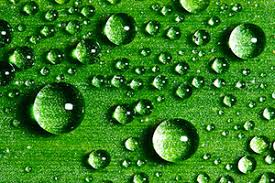Moisture Protection of Parylene
Posted by Sean Horn
Friday, December 28, 2018 7:30
@ 7:30 AM
Conformal coatings primary purpose is protecting the performance of highly sophisticated electronics such as printed circuit boards (PCBs), sustaining their functionality through often unfriendly operating conditions. Among the most important coating-requirement is safeguarding PCBs from the negative impact of moisture incursion. Sources are many. Liquidized obstacles to appropriate assembly function can result from unwanted contact with acid rain, aggressive solvents, atmosphere pollutants, chemicals, fog, high humidity, intermittent immersion, persistent rain, snow, salt water/mist and wet sprays of any kind.
Within a PCB, excess moisture disrupts thermo-mechanical properties, causing development of:
- component corrosion,
- decreased interfacial adhesion strength,
- diminished glass transition temperature (Tg),
- electrical short-circuiting, and
- metal migration.
 Moisture-originated performance issues can be effectively regulated by applying conformal coating to act as a buffer between the device’s components and its operating environment.
Moisture-originated performance issues can be effectively regulated by applying conformal coating to act as a buffer between the device’s components and its operating environment.
Vacuum-deposited parylene (poly-p-xylylene/XY) coatings offer many protective benefits for electronic devices. XY deposits uniformly and pinhole-free, hydrophobically, with a low dielectric constant and excellent biocompatibility. Parylene permeation barriers assure the water vapor transmission rate (WVTR) affecting an assembly is minimal, prohibiting moisture from passing through its protective film to underlying components.
As a measure, WTVR provides
- a numerical value for the level of water vapor migration through thin film barriers,
- calculated in terms of time required for moisture permeation, and
- total inner-assembly area made wet.
Lower numerical values represent better WTVR. Compared to liquid coatings – acrylic, epoxy, silicone and urethane — parylene WTVR values are the lowest, representing superior moisture barrier provision. XY adheres to the widest range of substrate substances/surface geometries, creating moisture barriers throughout the assembly.
Of all XY types, Parylene C has the best water vapor barrier properties. The WVTR of 5 types of XY compared to 3 liquid coatings is provided in Table 1.
Table 1: WVTR Barrier Properties of Parylene and Liquid Conformal Coatings
Polymer WVTR, (g·mm)/(m2·day) Parylene C 0.08
Parylene D 0.09
Parylene AF-4 0.22
Parylene F (VT-4) 0.28
Parylene N 0.59
Silicone (SR) 0.89
Polyurethane (UR) 0.93
Epoxy (ER) 0.94
All parylene types out-perform liquid coatings as moisture barriers, as measured by WVTR; types C and D offer lowest WVTR-levels.
Numerous studies have verified XY’s ability to provide ongoing protection from moisture incursion. .
- In one, ~ 8 microns (μm) of Parylene C film was sufficient to preserve the magnetic properties of a V[TCNE]x (TCNE = tetracyanoethylene) room-temperature, organic-based magnet, devices which has a tendency to rapidly degrade when exposed to moisture or oxygen. Typically beginning within minutes of exposure, Parylene C coating maintained magnetic capacity for more than 7 hours, which grew to 14 hours when a subsequent overcoating of 2-μm Parylene with a 0.1-μm layer of gold was added..
- A second study investigated the corrosion/moisture protection of Parylene C for cold rolled steel (CRS). XY has previously exhibited poor CRS-adhesion, because the steel’s own surface characteristics were too dense to permit parylene penetration during chemical vapor deposition (CVD) processing. Addition of a plasma polymer interlayer generated sufficient interfacial bonding to the CRS substrate, significantly enhancing parylene adhesion. Type C then provided CRS an excellent moisture barrier, as well as additional bulk properties, including electrical insulation and film layer toughness.
- A third report provided additional verification of Type C’s superior moisture barrier performance, following immersion in saline solution of sodium chloride and water, compared to liquid coating materials. At a thickness of 25 μm, Parylene C lasted in excess of 30 days before coating breakdown commenced. Epoxy and urethane coatings 4 times thicker (100+ μm) began to breakdown in just over 6 hours; silicone at the same thickness lasted 58 hours (2 days, 10 hours). Thus, a third demonstration of XY’s superior reliability providing substrates water barrier protection.
Moisture presence within the PCB alters its thermo-mechanical properties, and ability to function as designed. Successful in the nanometer range, XY-coatings resist chemicals/corrosives/moisture/solvents, with minimal thermal expansion, maintaining PCB function/performance through most operational conditions. According to IPC-CC-830B, parylene qualifies for Class B specification as a hydrolytically-stable conformal coating, suitable for use in operating environments requiring higher levels of moisture insulation resistance and humidity-aging testing. Reliable parylene permeation barriers prevent moisture from passing through to underlying components, minimizing WVTR. XY’s superior moisture barrier management is further apparent with bio-implantable medical devices, where parylene conformal films withstand the presence of internal sources of moisture within the body more effectively than liquid coatings.
To discover more about parylene, download our whitepaper now:
Download our guide on Parylene 101
And if you’re looking for parylene conformal coating services, look no further than the experts at Diamond-MT. We have over 30 years’ of experience providing high-quality coating services for all industries. Contact us to day for more information or to request a quote.
Comments
Homepage 4/17/2020. 10:17:10 AM
... [Trackback] [...] Informations on that Topic: blog.paryleneconformalcoating.com/whats-the-difference-between-potting-and-conformal-coating/ [...]

londondrugscanada.bigcartel.comlondon-drugs 4/17/2020. 10:17:10 AM
cialis uk https://londondrugscanada.bigcartel.com/london-drugs This is nicely expressed. !